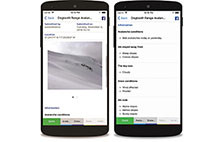Instructing in Avalanche Terrain – Advanced Module (Field)
This field course allows students to acquire teaching and risk management skills to supervise advanced recreational courses in demanding and complex terrain (“Avalanche Skills Training 2” (AST2) and “Managing Avalanche Terrain”). The main objectives include terrain identification, group management, and compliance with Guidelines for Instructing in Avalanche Terrain (GIAT).
- Avalanche Operations Level 2 Course;
- Online course Instructing in Avalanche Terrain – Fundamentals ;
- Must be 18 years of age or older;
- Advanced backcountry skiing or splitboarding experience and good physical fitness: know how to use your alpine touring equipment (bindings, skins and skis/splitboard), be able to travel in variable conditions and over diverse terrain (such as deep snow, brittle crust, wind slabs and dense trees) while carrying a backpack ;
- It is strongly recommended that you have completed at least one AST2 course before taking the field course “Instructing in Avalanche Terrain – Advanced Module.”
Objectives
- Demonstrate instructional strategies to deliver avalanche education;
- Implement avalanche risk management tools for the purpose of delivering avalanche education;
- Demonstrate the use of the decision-making tool as part of Avalanche Skills Training 2 (AST2);
- Demonstrate appropriate travel procedures in demanding and complex terrain as defined by the ATES;
- Effective verbal communication.
What to expect
This course takes place over three days and requires preliminary work consisting of developing an avalanche risk management plan, identifying the terrain, and teaching a topic from Avalanche Skills Training 2 (AST2) by Avalanche Canada. Completing the preparatory work will provide a solid foundation, allowing for a deeper exploration of advanced topics during the field sessions. To optimize the learning experience, preparatory work will be required at the end of each day, consisting of preparing the excursion plan for the following day.
A sample schedule will be sent upon registration to give an overview of each day’s activities. Class days are long, and it is the student’s responsibility to take care of their personal needs. This includes food, drinks, appropriate clothing, and ensuring that they are well rested and ready to learn. There are no scheduled meal breaks. Participants should be prepared to eat and drink throughout the day.
The “Instructing in Avalanche Terrain – Advanced Module” course is a combination of classroom and field learning. Students will alternate between indoor and outdoor sessions each day.
Language
The course will be taught in English, including readings, exercises, and videos. However, student resources and Guidelines for Instructing in Avalanche Terrain (GIAT) are available in French.
Equipment
At the time of registration, an e-mail will be sent to the student with logistical details of the course, announcing times and locations. A detailed list of required materials outlines the essentials for the course. Participants should be prepared to deliver effective field sessions.
ASSESSMENT
The assessment of participants is divided into five categories: hazard and risk identification, teaching CSA 2 lessons, terrain identification, group management, and field notebook. Students will receive grades based on the following criteria: below standard (<70%), standard (70%–85%), and above standard (86%–100%). A “meeting the standard” grade is required to obtain the certificate for the course “Instructing in Avalanche Terrain – Advanced Module (Terrain)”.
Registration
Offered in English in Nelson (B.C.) from March 24 to 27, 2026.
Price $1,510
Please mention your interest in a course in Quebec in 2027 (12 registrations required)
Any questions?
If you have any questions about the Avalanche Search and Rescue 2 course (price, date, location, etc.),
please contact the Canadian Avalanche Association
(studentservices@avalancheassociation.ca), please.



